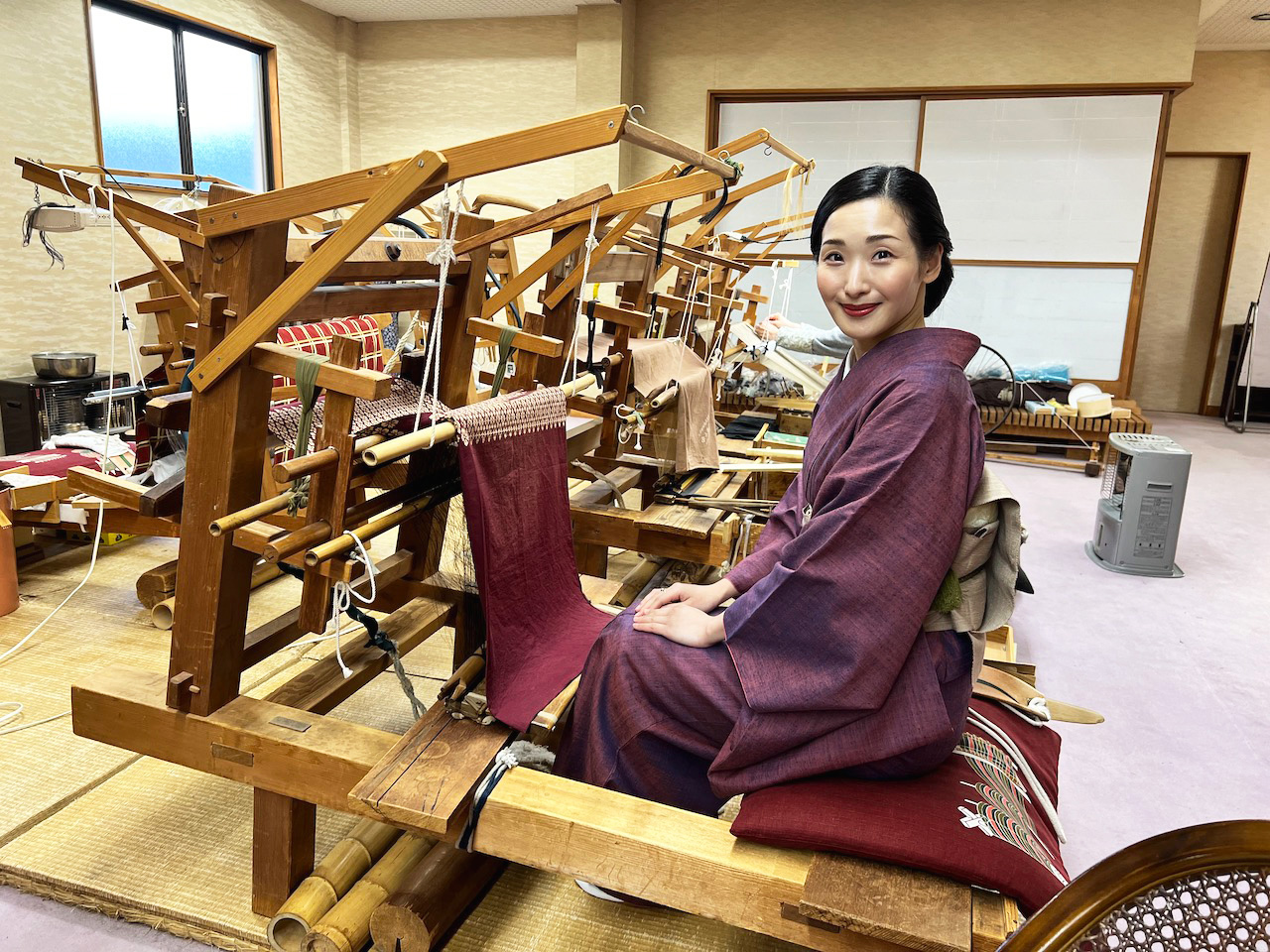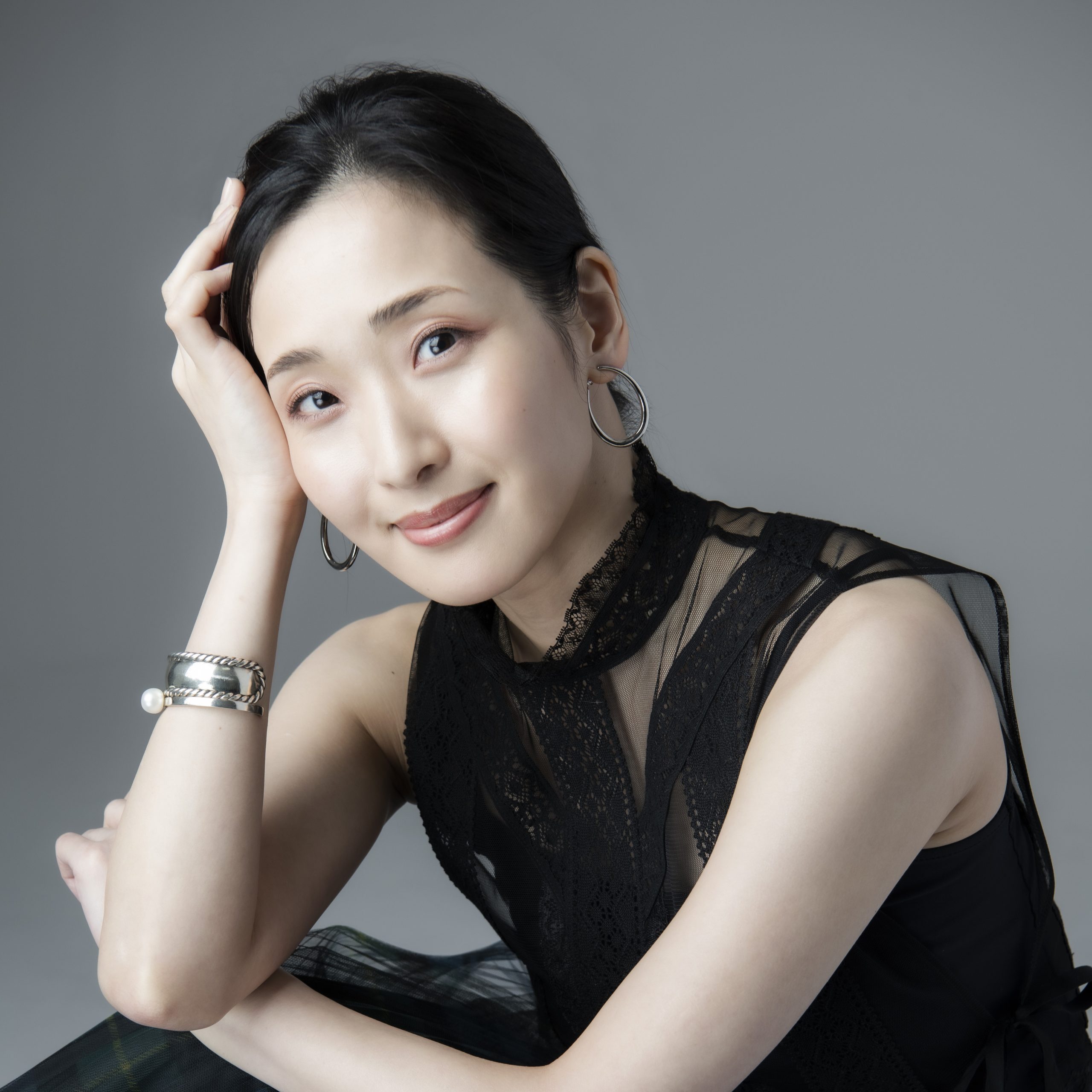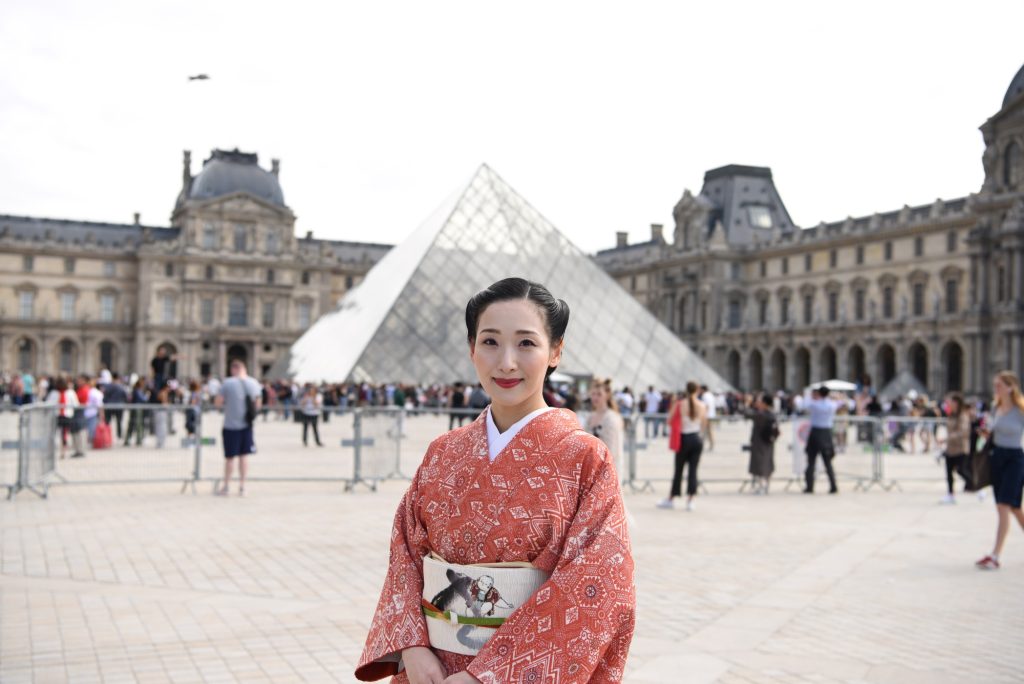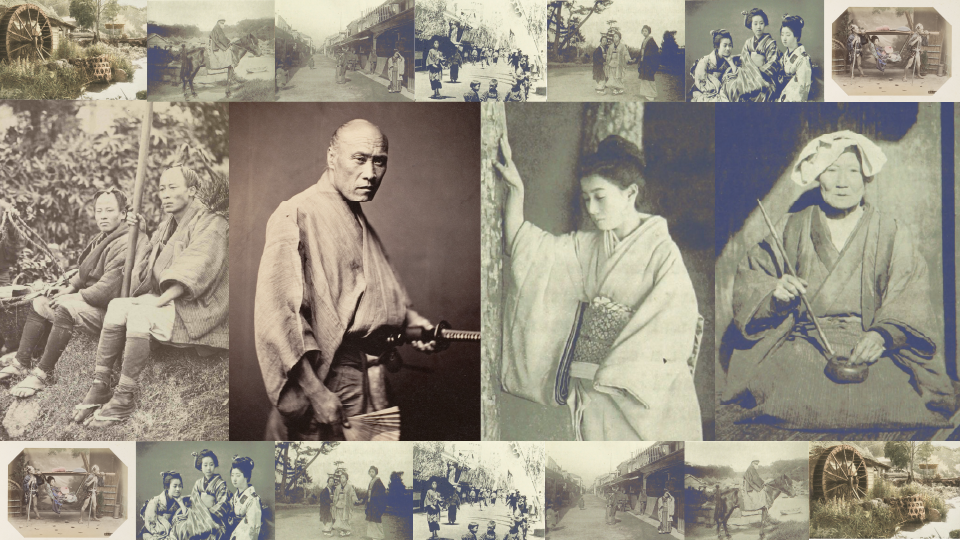
Wandering around the enchanting twon of tsumugi
Actually, I have always adored the use of tsumugi (紬, fabric woven from silk). Because people who are experts in kimono always wear tsumugi. …… I think of kimono tsumugi as denim in the Western sense of the word. ‘It’s a durable, casual material, but fashionable people can master it!’ I think it’s a bit like denim. This time, I took a stroll around the castle town of Yuuki, aiming for the Yuuki tsumugi I longed to wear!
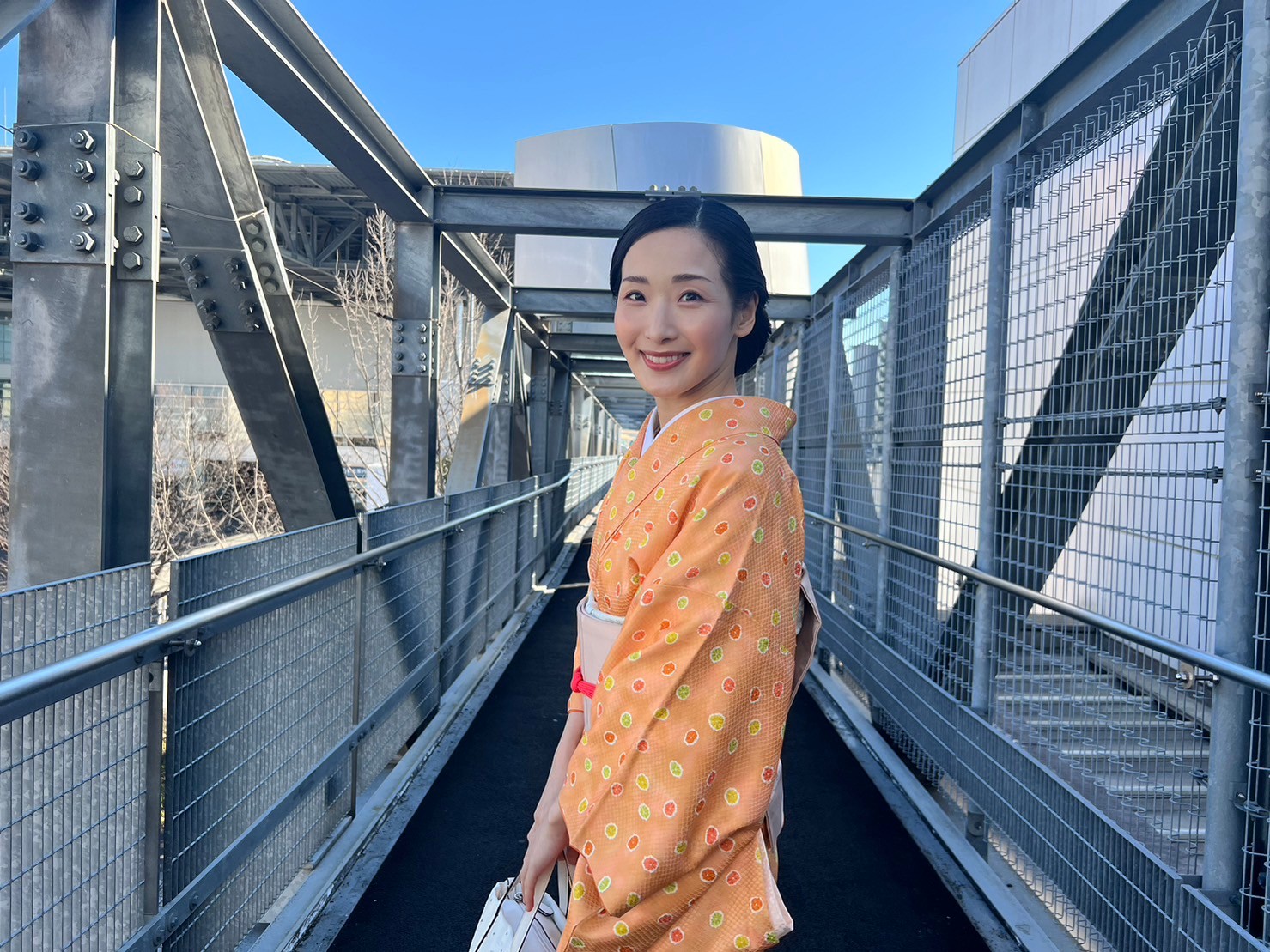
Eat up Yuuki’s soul food dressed in tie dye floral patterns!
You can’t fight a battle if you’re hungry! So first we strolled around the town, comparing the Yuuki speciality ‘yudemanju (ゆでまんじゅう ; boiled sweet buns)’ . I’m just a foodie!
Depending on the shop, the buns may have a grain or a hard red bean paste, a thin or a thick skin, or a different shape and design, making them unique! The local residents have their own ‘My Favourite Yudemanju’ and go to the shop they have their heart set on buying, which shows the depth of their ‘Yudemanju love’.
After eating a full meal of boiled manju, I couldn’t resist buying some takoyaki (たこ焼き)!
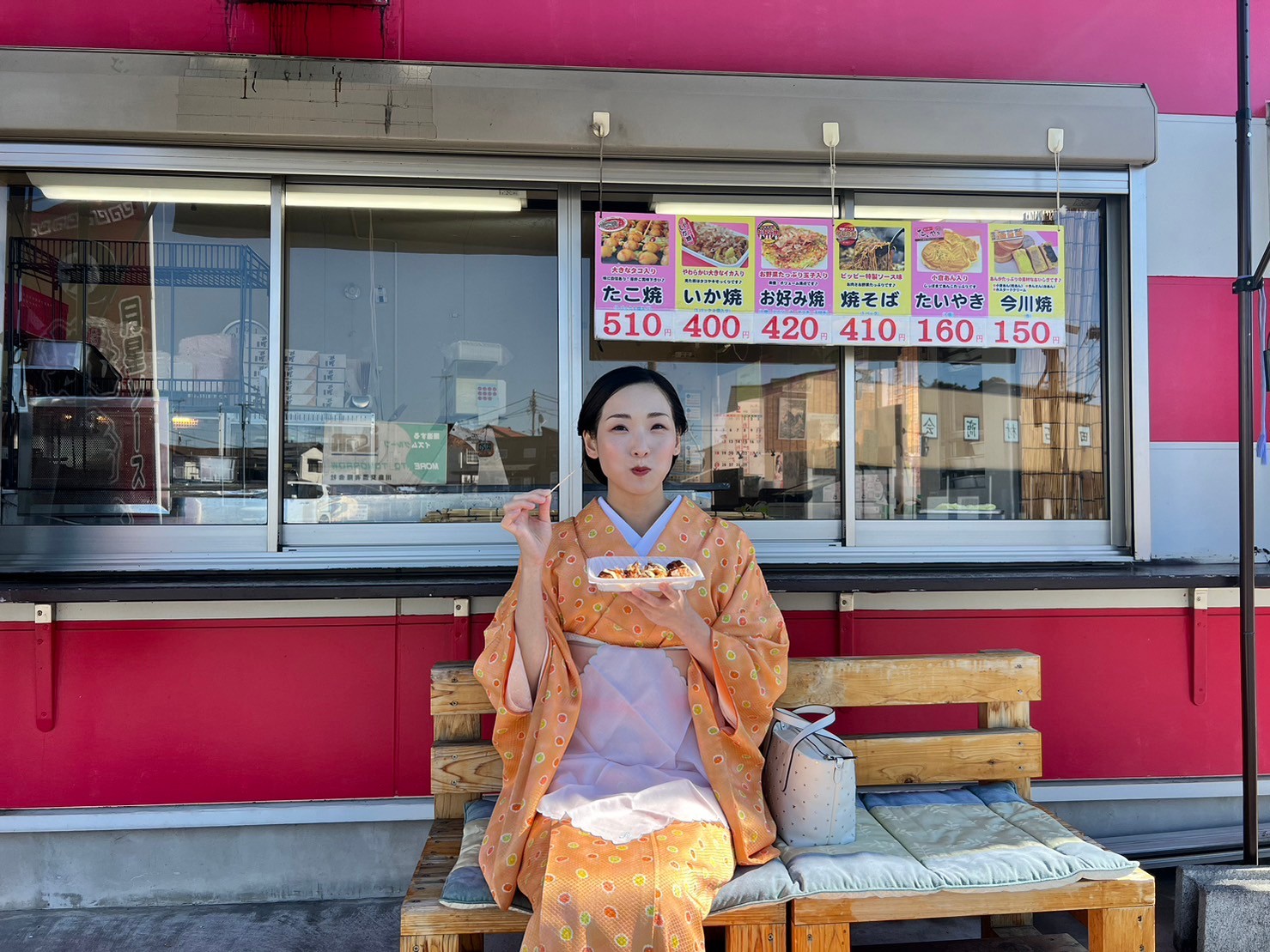
How can takoyaki under a blue sky taste so good? It was topped with dried shrimp and was superb! That’s no wonder – Takoyaki Pippi has been in business for more than 30 years and was a favourite of the locals.
A great taste of Yuuki’s soul food.
Vivid pink to complete the outfit! Outfits for incoming spring
Incidentally, this kimono is also second-hand! My grandmother and mother found it in a department store about 15 years ago and “bought it because it was so cute”. It finally saw the light of day. It was a long time coming…….
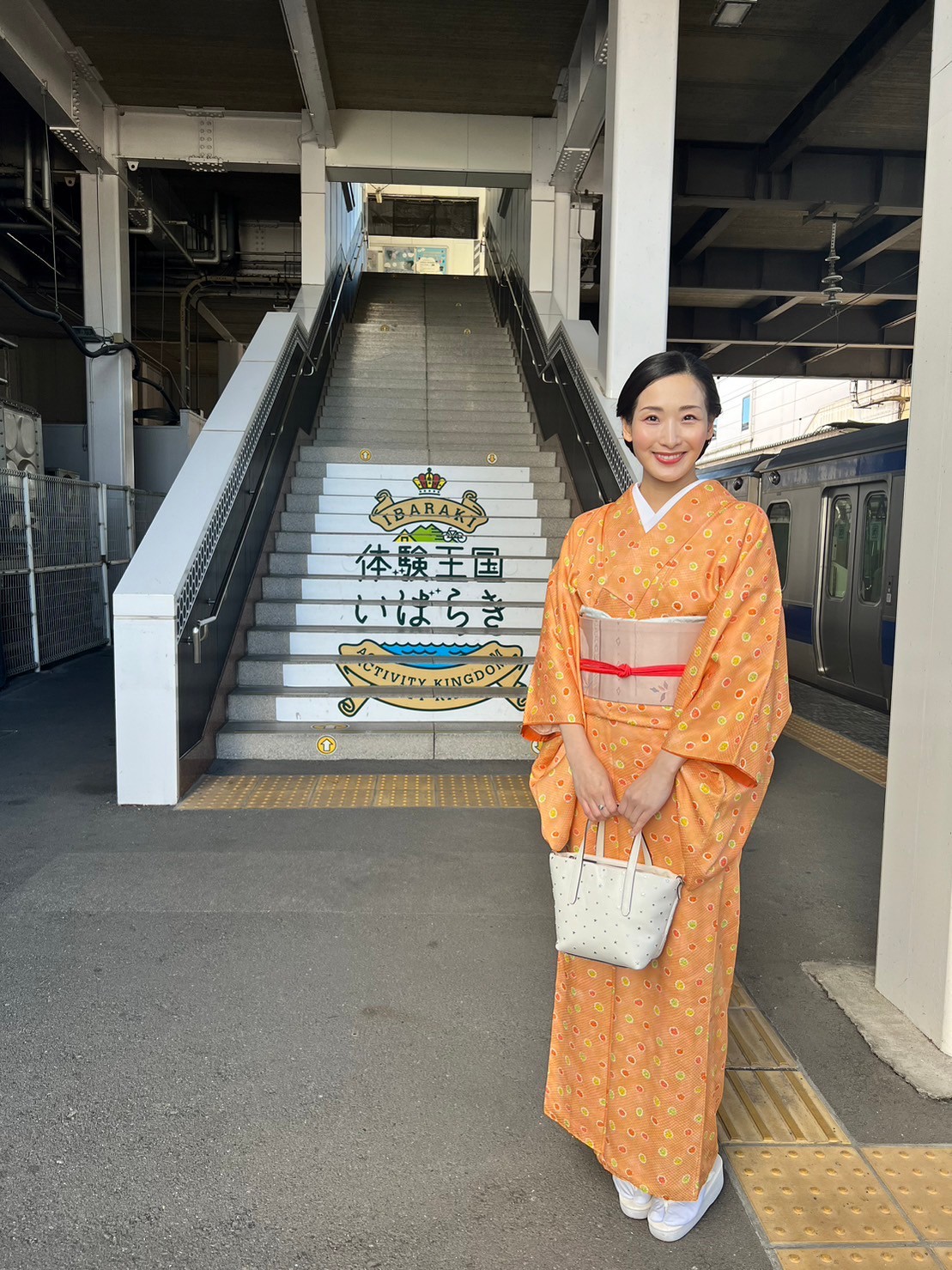
The name of the collection is ‘Patterned outfits for incoming spring’! The polka-dot-like shibori (絞り) floral pattern and the star pattern on the bag are both clustered patterns. Sorry if you’re not a big fan!
It is balanced by a non-assertive pink-beige obi (帯), a light blue obiage (帯揚げ) inspired by the blue sky of Yuuki, and the most important point is the shocking pink obijime (帯締め). In person, the colour of the obi is quite loud.
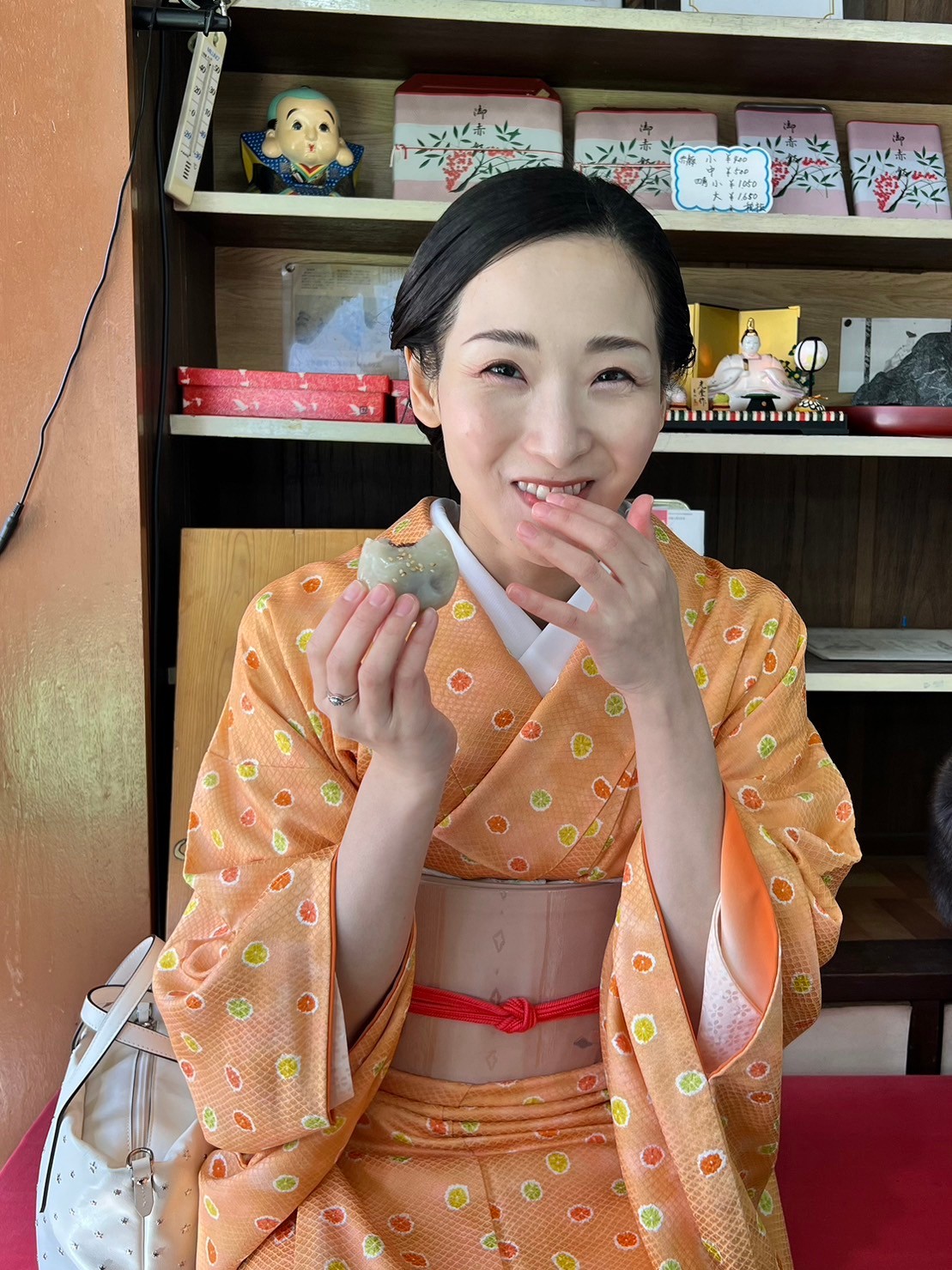
When I first saw it, I thought that such a loud colour would not go with a classic kimono, but I have recently realised that it is quite versatile as a colour that can be used to bring together a coordinated look.
In the kimono manga ‘Gintaro-san Otanoimi mosu (銀太郎さんお頼み申す)’, which was introduced in the previous article, there is a character called Mino-san (巳野さん), who is very strict about the colour of obijime. If I choose an obijime in a haphazard way, Ms Mino-san gets angry with me! Since she appeared in the series, I have become more conscious of the choice of obijime as a ‘finishing touch’ to my outfits!
From Showa to modern. Hybrid look and attractive streetscapes
Yuuki City, which flourished as a castle town, is a tranquil town with an old-fashioned townscape. There are fashionable cafés whose interiors have been renovated in a modern style while the exteriors of the buildings remain unchanged, and there are good old clock shops and restaurants with shop fronts that retain the atmosphere of the Showa period. …… It was a hybrid of old and new!
KURA:SAUNA (蔵サウナ), which attracts customers from outside the prefecture, is said to be booked months in advance.
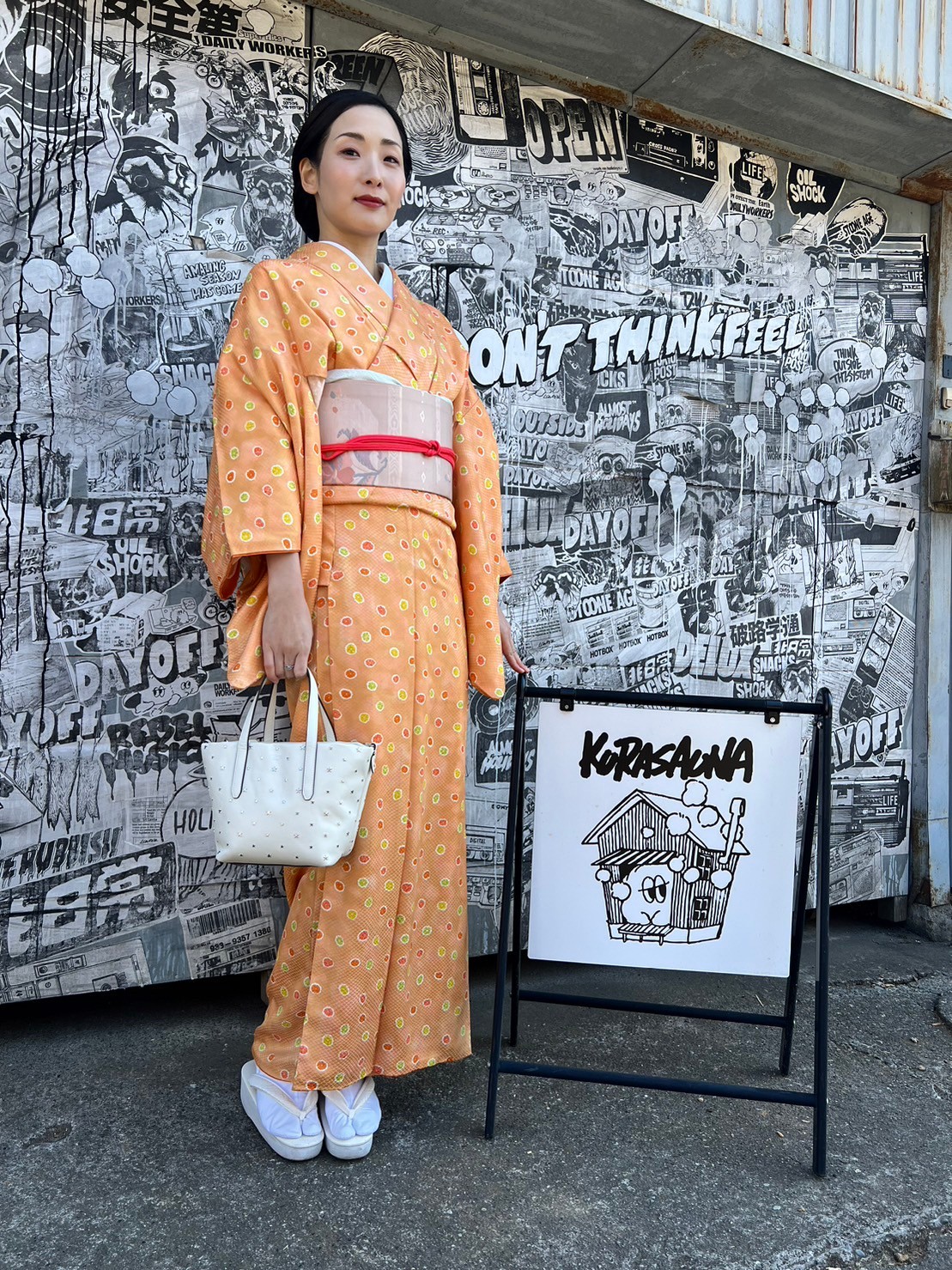
“We felt the local people’s love for Yuuki, their desire to care for and enliven the town across generations.” The local people’s love for Yuuki was felt.
Also experience renting out Yuuki-tsumugi!
Which one to choose? The rental process
This time, we applied for the ‘Yuuki Tsumugi Wearing Comfort Experience’ from the Yuuki City website and rented rental tsumugi!
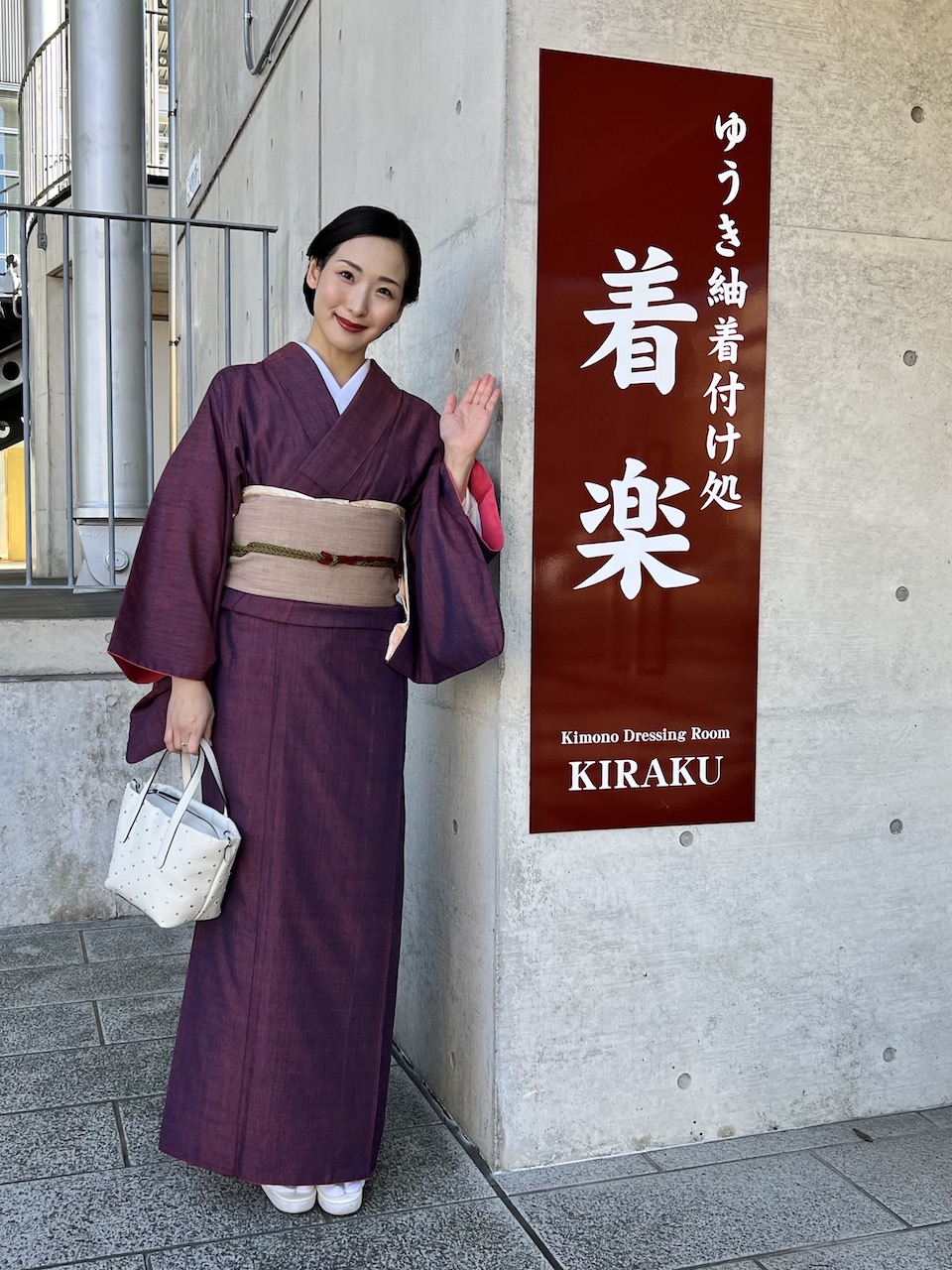
When you pre-register, you can select the kimono of your choice from the list of rental kimonos and reserve it. I chose a bright red and purple coloured kimono. On the day of the event, you can also have your kimono dressed at ‘Yuuki Tsumugi Kitsukedokoro Kiraku (ゆうき紬着付け処 着楽).’
I wore my own jyuban (襦袢; underwear), but a set of accessories such as naga-jyuban (長襦袢; long underwear), obi and obiage can be provided. If you make use of the options, you can also rent tabi (足袋; socks) and geta (下駄; Japanese clogs), so you can wear Yuuki tsumugi almost empty-handed.
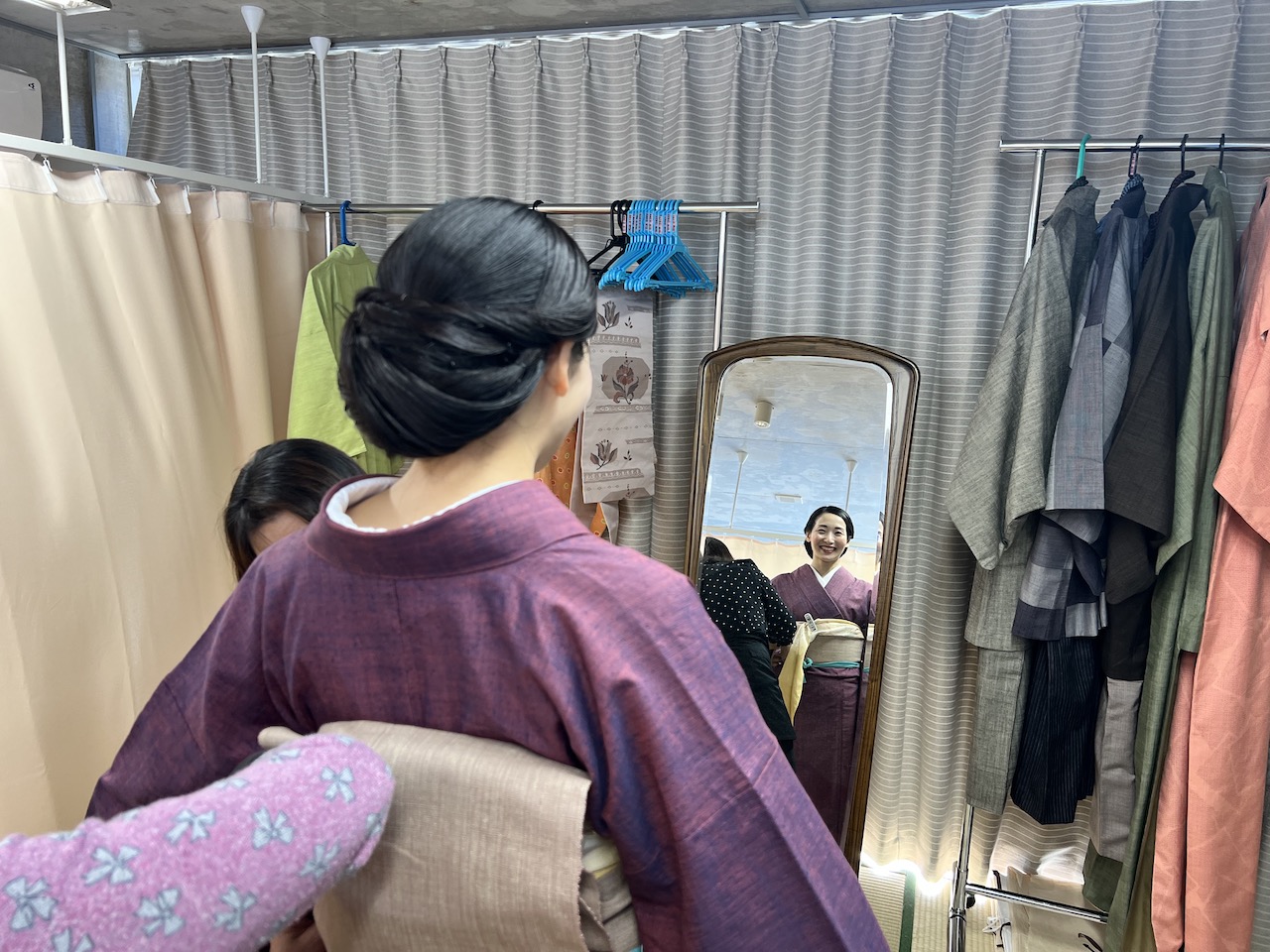
For the first time in my life, I tried on a tsumugi and my impression was …… lightweight! Warm! The weather was fine but the wind was still cold, so the moment I put it on I realised how well Yuuki-tsumugi keeps you warm. The reddish-purple silk kimono I chose was a beautiful fabric with depth, shining a glossy pink or a deep purple depending on the way the sun shone on it, and it made me feel giddy every time I looked at it!
Clad in Yuuki tsumugi. Excitement peaks as you explore the ruins of Yuuki Castle
Wearing Yuuki tsumugi, a walk around the ruins of Yuuki Castle is a must!
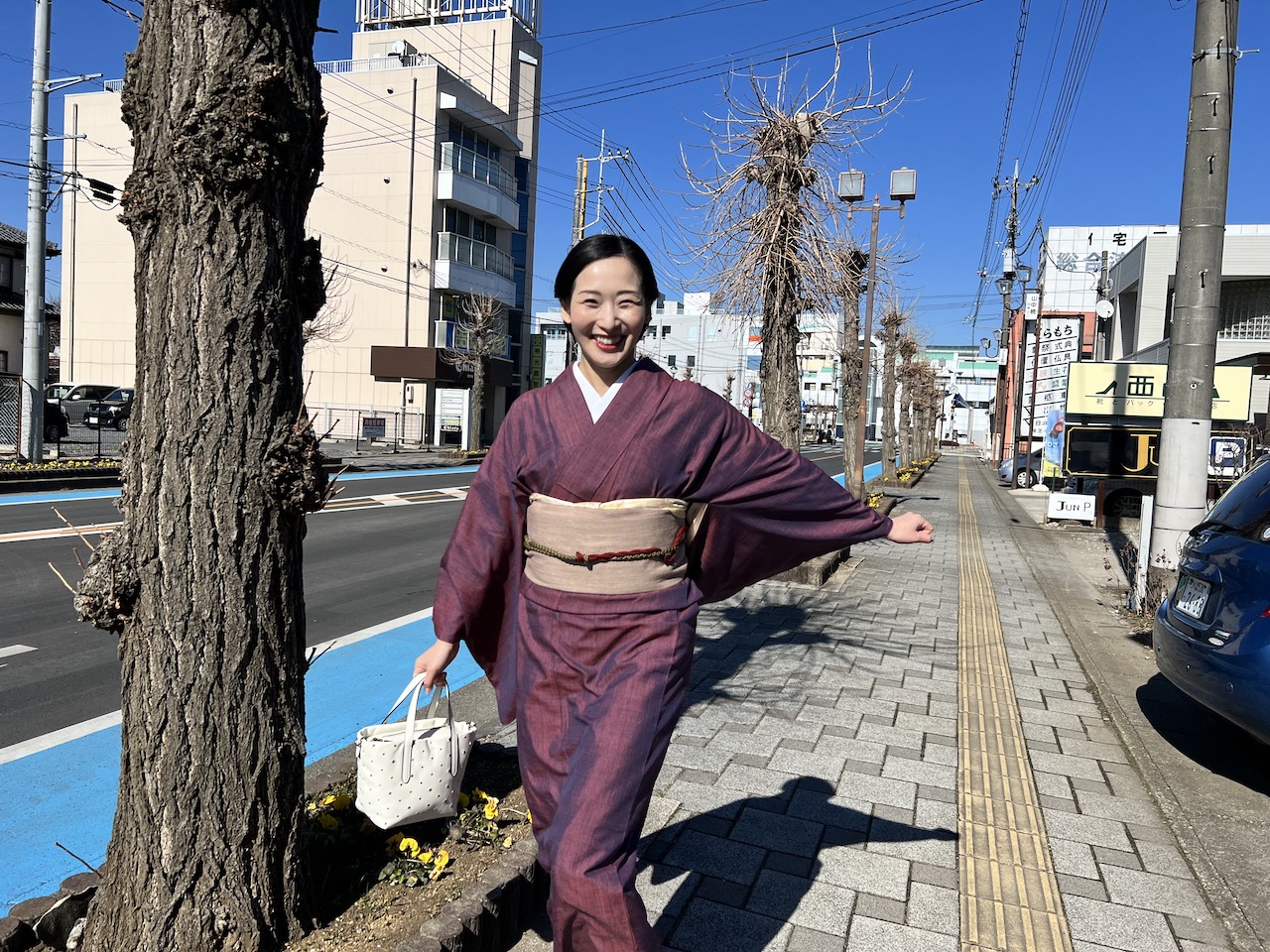
The castle is no longer there, but while walking around Yuuki Elementary School, which is surrounded by a white wall known as a Tsukiji (築地) wall, I heard the children’s voices just as it was time to leave school. A school surrounded by white walls feels somewhat protected.

If you go to Tojiji (東持寺) Temple, known as the Umedera (梅寺) Temple, to see the plum blossoms, ……
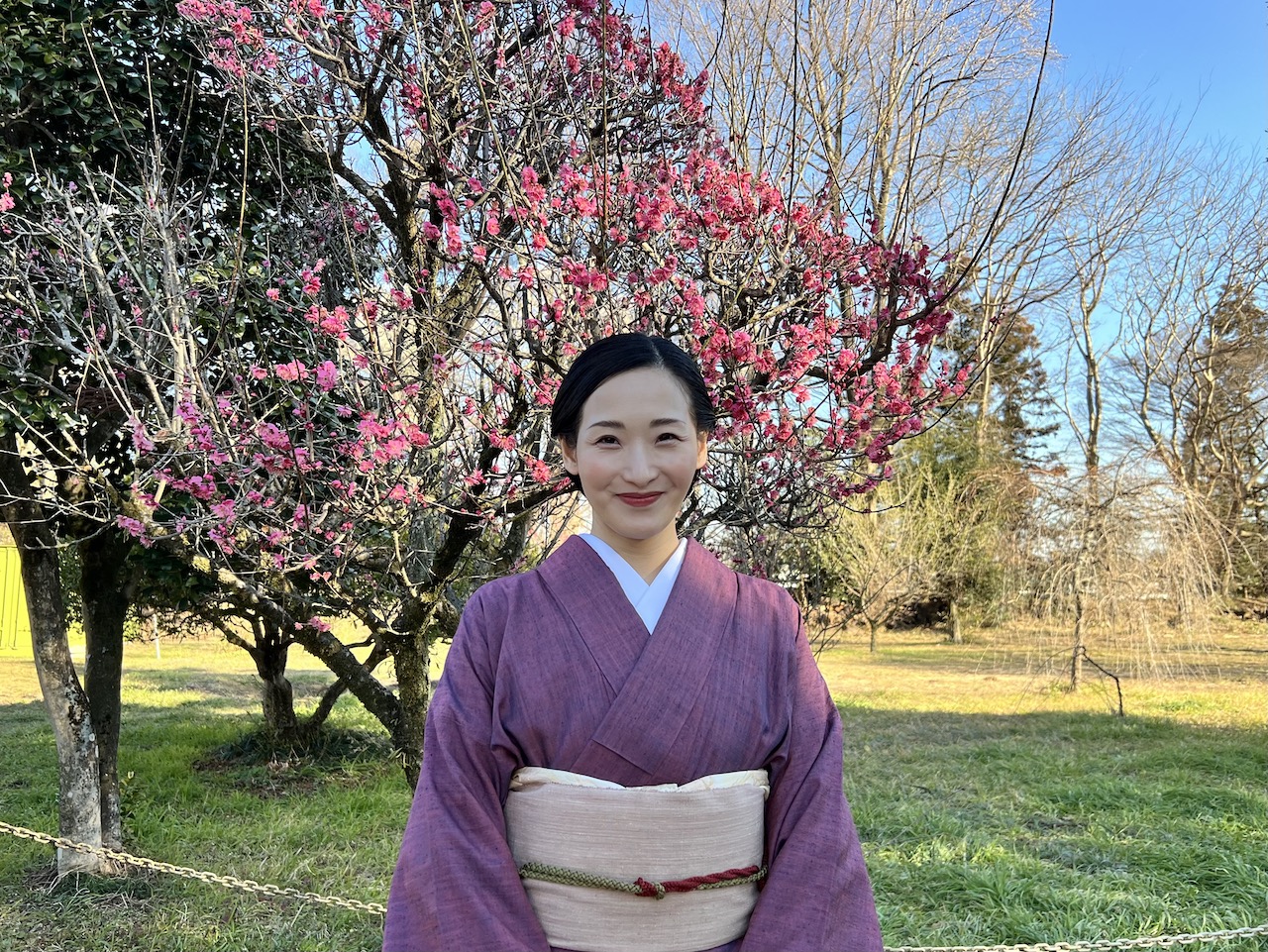
I was enjoying living out my period drama fantasies in a bamboo grove ……
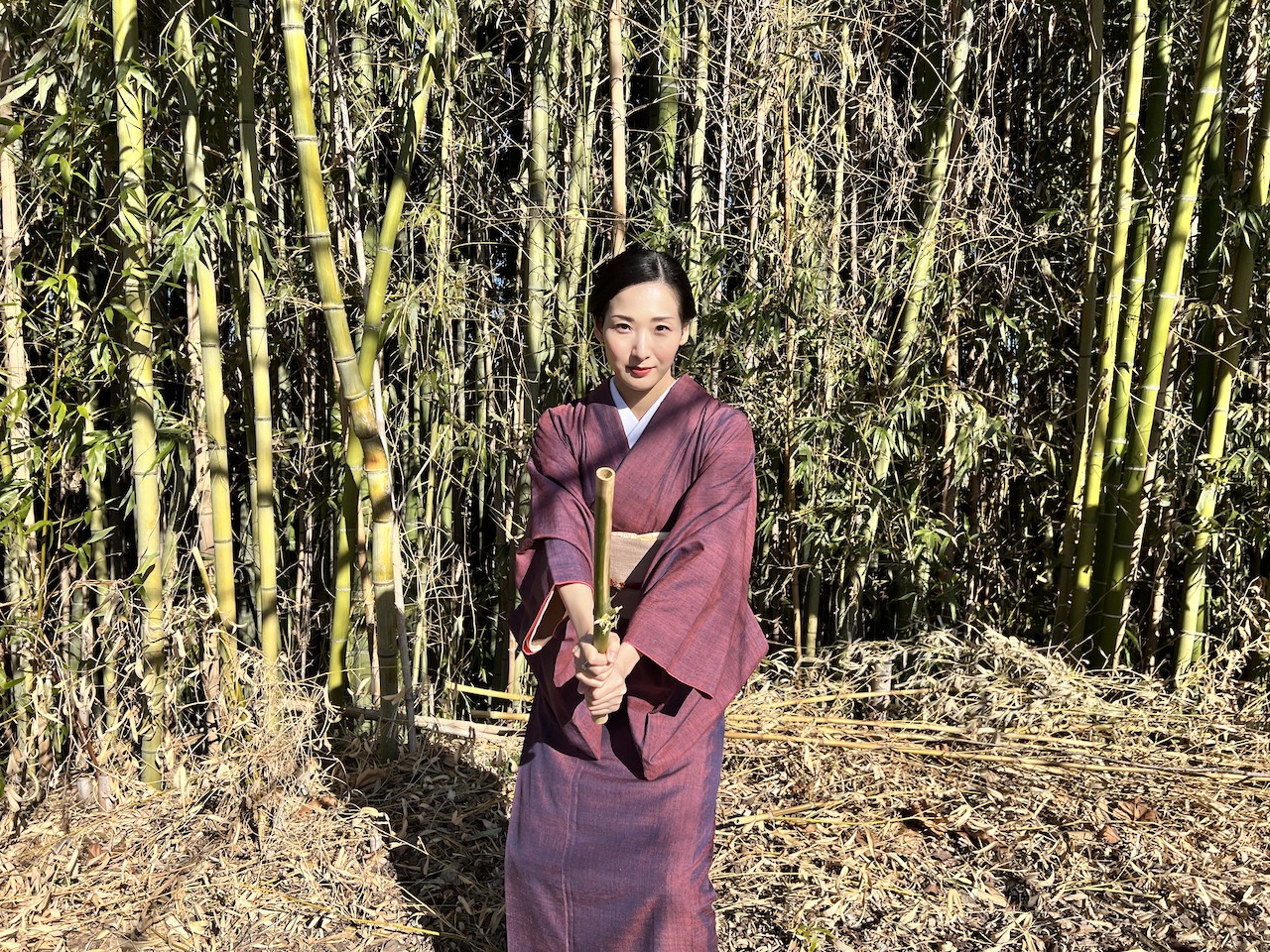
I got kind of excited and eventually climbed on the playground equipment in the park (laughs). Sorry for being such a tomboy again!

Visit and experience the handiwork of tsumugi weavers at the Goshikan
Finally, we went to the long awaited ‘Goshikan (郷土館; Local History Museum)’. There are historical materials and exhibits of actual tsumugi products, and you can watch craftsmen at work and even try your hand at weaving tsumugi.
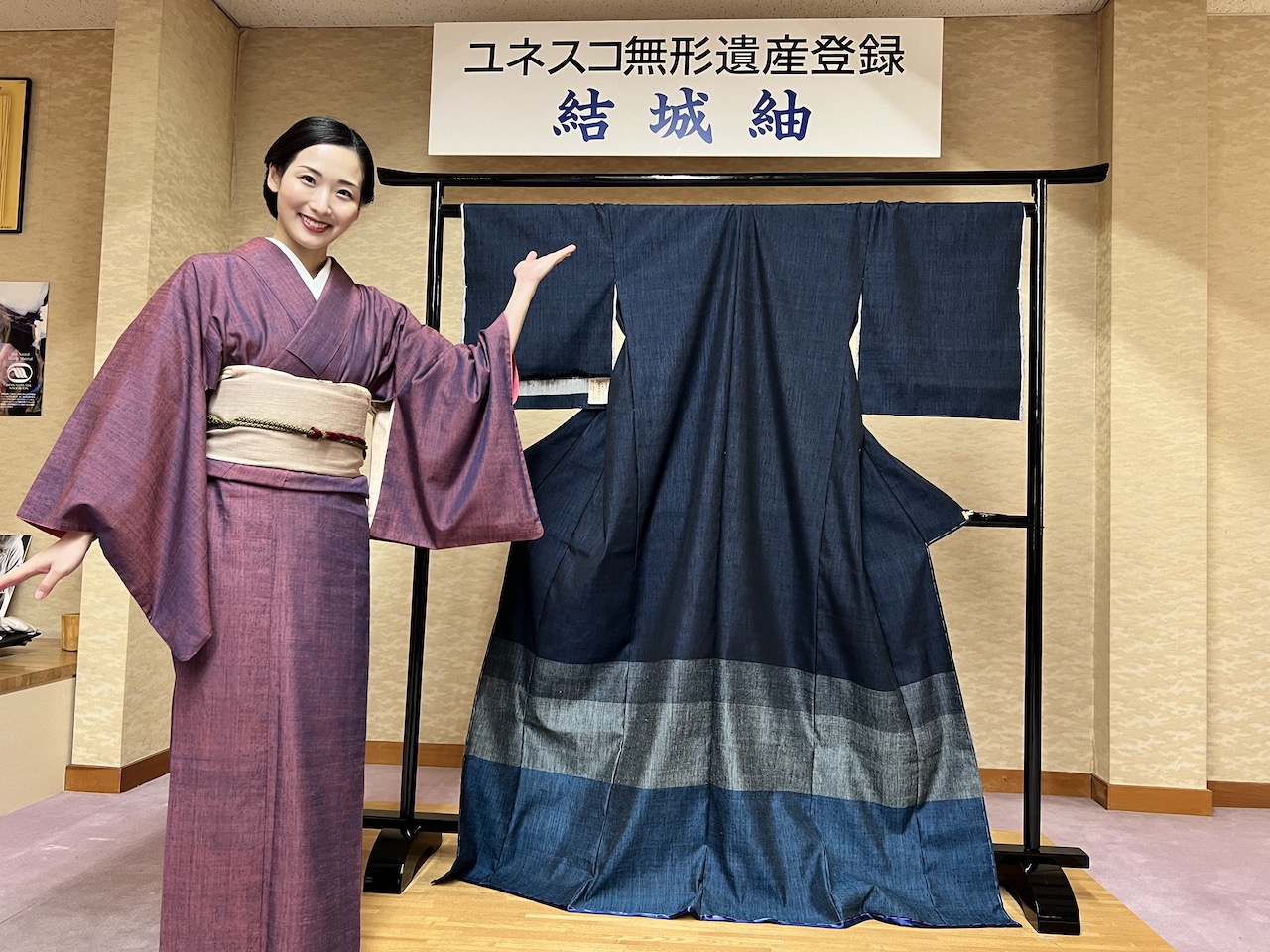
The stories of the craftsmen never cease to amaze me
What the artisans taught us was full of surprises! First of all, tsumugi thread is very fluffy. The thread is taken out from the cocoon ball, which is made from the hardened threads expelled by the silkworms, and is then lengthened without being twisted. Therefore, when the thread is pulled sideways, it splits as it is. In the terminology of the craftsmen, this is called ‘pulling the thread out or the thread is pulled out’.
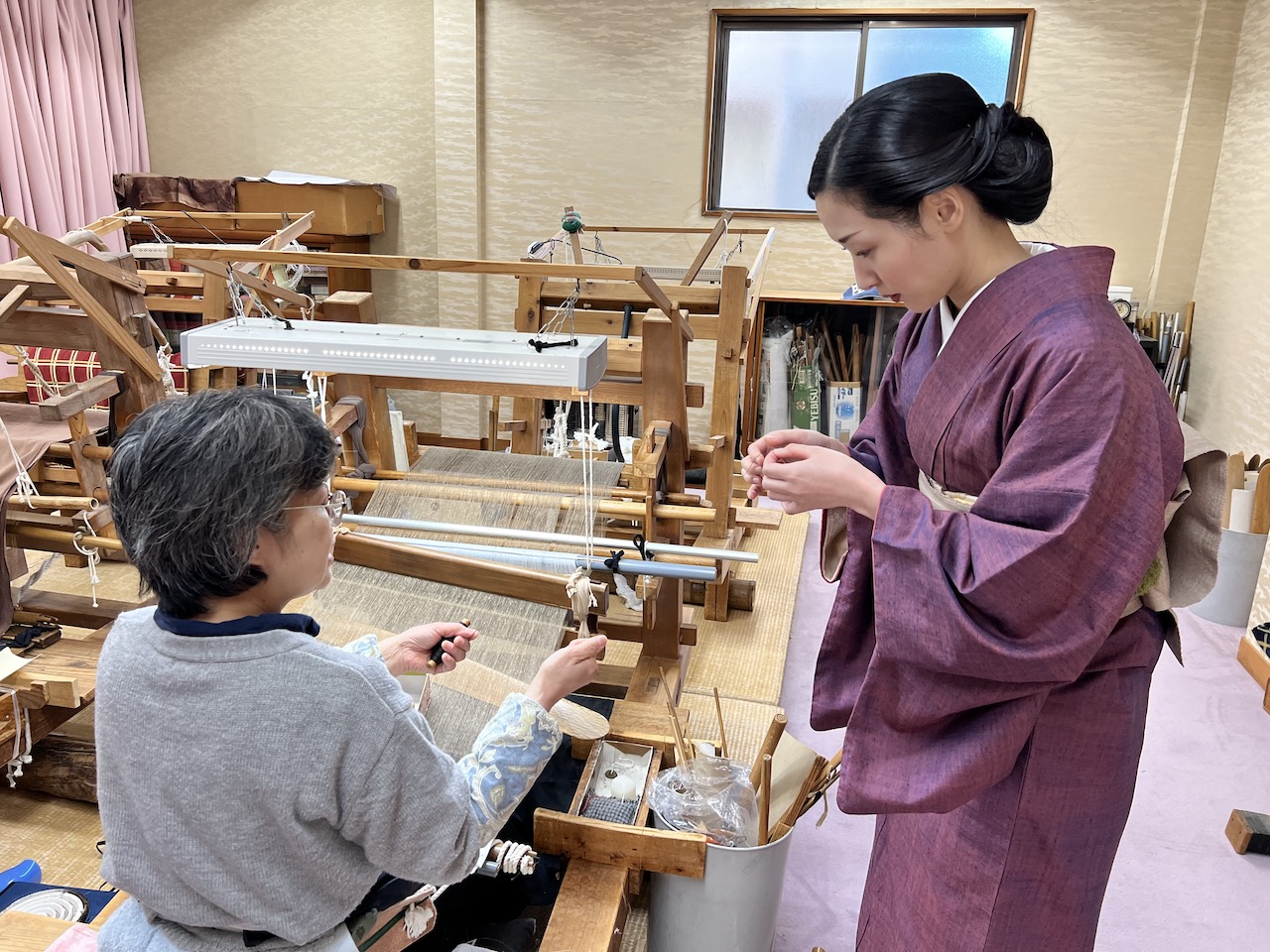
The fluffy yarns are easily tangled and the weaving process is very time-consuming. By weaving the fluffy yarns with their grain tightened, a light, windproof and warm tsumugi can be produced. I was surprised at how light the finished product was when I was allowed to hold it in my hands!
The appreciation of kimono felt through the experience of silk weaving
Then I experienced the long-desired tsumugi weaving! A more full-body workout than I had expected!
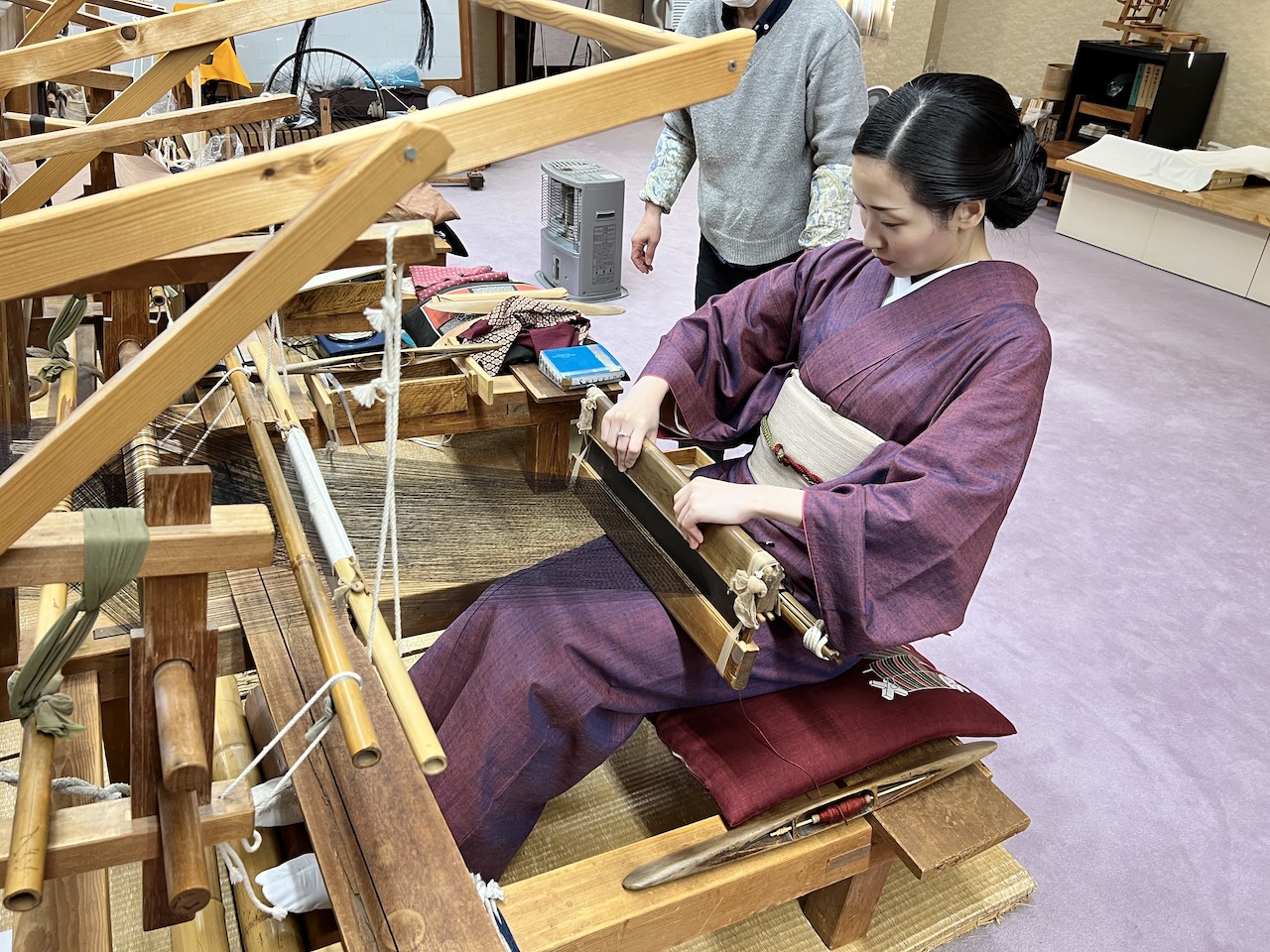 You pull the threads tight with the belt round your waist and use your legs to swap the upper and lower threads. Then, after threading the weft yarn, you also use your arms to tighten the threads. …… I wonder how long it takes to weave one skein. ……
You pull the threads tight with the belt round your waist and use your legs to swap the upper and lower threads. Then, after threading the weft yarn, you also use your arms to tighten the threads. …… I wonder how long it takes to weave one skein. ……
The experience was beyond our imagination and made us realise once again that many kimonos, including the tsumugi kimono we borrowed, are made through the manual labour of craftspeople, deepening our appreciation for each kimono.
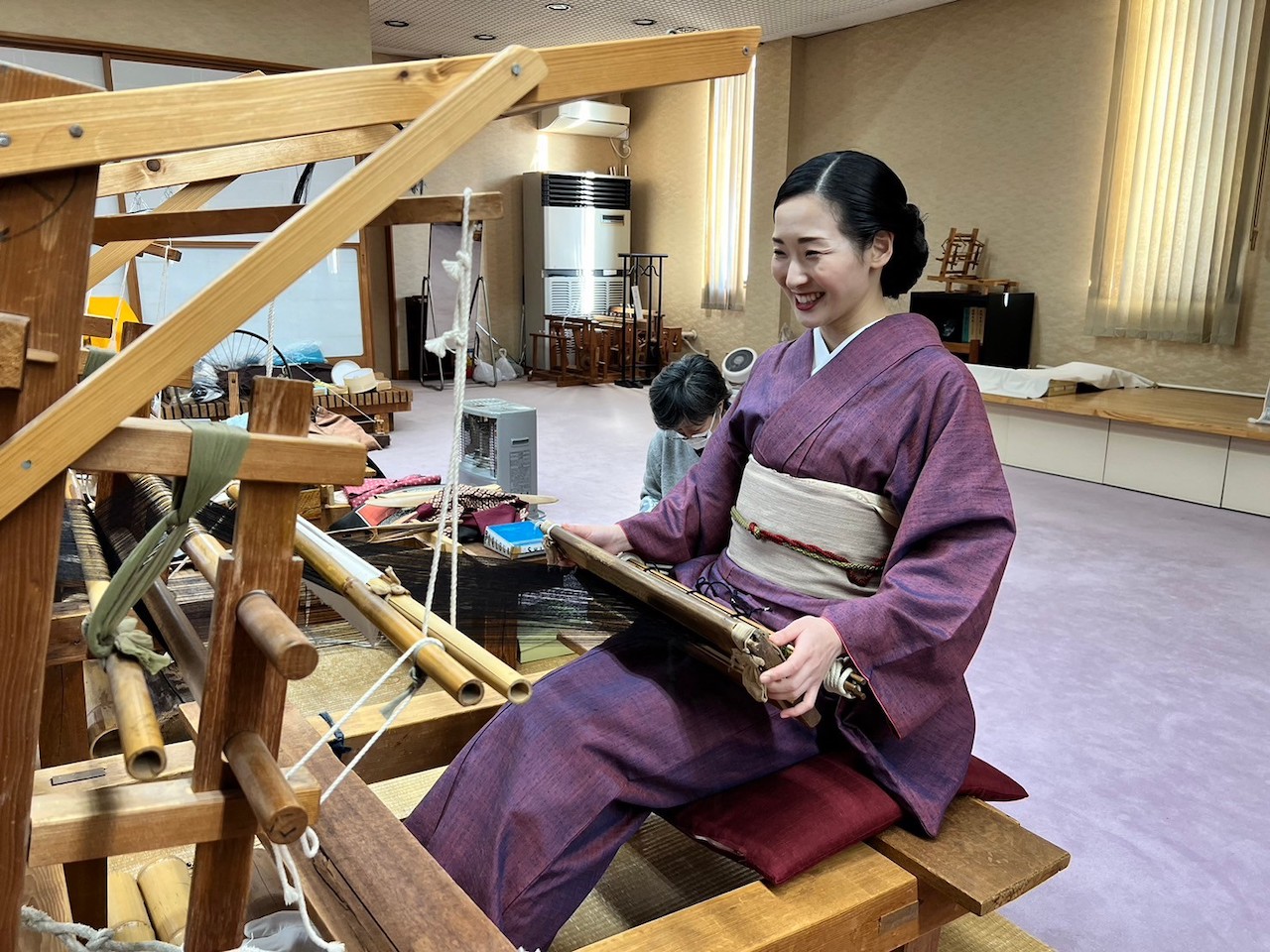
The process of progressing through the tsumugi one thread at a time is so enjoyable and gives me so much joy……. I only managed to weave a little this time because I ran out of time, but I would like to complete some work next time! Maybe a vase mat or something like that……? (already chickening out)
This article is translated from https://intojapanwaraku.com/fashion-kimono/238935/






